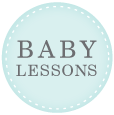Getting to know your child through their sensory system, Part 2: At home sensory play
All sensory systems benefit from exposure to different sensory inputs! Providing sensory play, incorporating sight, taste, smell, sound, touch, movement, and “heavy work,” are great for building your child’s sensory processing skills. “Heavy work” activities provide children with opportunities to weight bear and explore movement to understand where their body is in space (proprioception) and can often help a child recalibrate emotionally. The sensory activities listed below are divided by age group, however, many of these activities can be used throughout your child’s development. Feel free to modify each activity to challenge your child’s developing skills, making for a plethora of ideas and activities throughout childhood.
We strongly recommend adherence to controlled and limited screen time via the American Academy of Pediatrics recommendations. This gives babies and children ample time to explore their environments and develop their sensory systems.
0 to 2 months old
At this age, infants are learning to control their gaze and focus on objects. They benefit most from high contrast images and objects at this age. Infants can recognize your voice and enjoy calming sounds to soothe. At this age they startle quickly to change in light, movement, and sound
- Black and white cards and mirrors
- Listen to music while swaying to the beat in your arms
- Tummy time and sidelying activities
- Offer different smells, for example baby being in the vicinity when coffee beans are being ground
- Provide exposure to the outdoors
- Provide different positions and movement changes; tummy time; side lying; hands to feet; rotisserizing
3 to 6 months old continue all above activities
Within this age range, infants are beginning to produce voluntary movement and feel their bodies against gravity. Their ability to track objects with their eyes is constantly improving and enjoy looking at interesting objects and people’s faces!
- Fabric books and toys with variety of textures
- Loosely tie balloon around ankle for depth perception (be sure to supervise this activity)
7 to 10 months old
Around this age, babies are super interested in moving and playing with you! Majority of their movements are controlled and purposeful. They are reaching and exploring their environments and want to be on the move. Offer a variety of textures and items for them to explore with their new skills!
- Engagement in daily routines of family life such as sitting in the high chair during family meals
- Crawl and cruise across different textures, around corners and under low heights (e.g., crinkle blankets, quilt, pillows, carpet, hardwood floors, grass, and sand)
11-12 months old
Around the age of one, children are typically cruising or walking, so continue to offer opportunities for them to recognize their balance and bodies in space. They are likely to be eating a wider variety in foods and have expanded activities they can participate in.
- Provide a designated drawer with containers, spoons, etc. in the kitchen at accessible height
- Water play bins/water table with different temperatures and objects to explore
- Food exploration with variety of colors, textures, smells, and tastes
- Offer obstacles to crawl through and across and over
- Lots of standing play with overhead reaching as able (magnets on fridge placed high)
1 to 3 years old
- Increase participation in family life such as dragging a small bucket of water to “help” wash the car (i.e. “heavy work” to provide input into joints and can help a child recalibrate emotionally)
- DIY rain stick
- Jell-O dig with washable toys and objects
- Play in the sprinkler, swinging and climbing opportunities, and pretend play
- Animal walks (bear walk, frog jump, wheelbarrow walk, army crawl) for deep pressure through hands and arms
- Create a quiet, cozy space for a chance to calm, practicing deep breaths as a self-soothing skill
4 to 10 years old
- Increased role in daily routines of family life by helping with cooking and outdoor duties which entail “heavy work” such as a child’s wheelbarrow filled with sand
- Tactile/sensory balloons with non-perishable food items (dried beans, rice, flour)
- Build their own obstacle course or fort
- DIY sensory bottles! Combine water, oil, food coloring, and objects of their choice
- Sensory exploration on the playground (pushing others on the swing, spinning, climbing, and sliding on equipment)
- Rolling down small hills for full body input
- Playdough, slime, or clay play
If your child is having a difficult time enjoying sensory experiences OR is fixated on one or two (spinning for example) to the exclusion of others OR is having behavioral issues that may be sensory related, consider seeking the services of an occupational therapist.
Written by: Olivia Willis, Doctor of Occupational Therapy, Class of 2022, Wingate University






